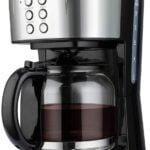Efficient waste management is a critical aspect of maintaining healthy and functional sewerage systems. Among the various challenges faced by municipal authorities and private entities responsible for managing wastewater, grease accumulation poses a significant threat to the proper functioning of sewer lines. In this article, we delve into the crucial role of grease traps in waste management within sewerage systems, exploring their installation process, maintenance requirements, and the benefits they offer installation of grease traps for sewerage.
Understanding Grease Traps
Grease traps, also known as grease interceptors or grease recovery devices, are plumbing devices designed to intercept fats, oils, and grease (FOG) from wastewater before they enter the sewer lines. These traps typically consist of a container with baffles that slow down the flow of wastewater, allowing grease to rise to the surface and be contained while allowing the cleaner water to continue flowing through the system.
Grease traps come in various types, including passive gravity traps, automatic grease recovery units, and manual grease traps. Each type has its own set of advantages and is suited for different applications depending on factors such as the volume of wastewater and the nature of the establishment.
The Need for Grease Traps in Sewerage Systems
The accumulation of grease in sewer lines can lead to a host of problems, including blockages, odors, and increased maintenance costs. Grease can solidify within the pipes, causing clogs that impede the flow of wastewater and result in backups and overflows. Moreover, grease buildup can attract vermin and insects and contribute to foul odors, posing environmental and public health risks.
To address these issues, many municipalities and regulatory agencies have implemented regulations mandating the installation of grease traps in establishments that produce significant amounts of grease, such as restaurants, cafeterias, and food processing facilities. These regulations aim to prevent grease-related problems in sewerage systems and protect the environment and public health.
Planning for Grease Trap Installation
Before installing grease traps in a sewerage system, thorough planning is essential. This involves assessing the requirements of the system, including the volume and type of wastewater generated, as well as determining the appropriate size and location of grease traps. Consulting with experts and local authorities can help ensure compliance with regulations and optimize the effectiveness of grease trap installations.
Installation Process
The installation of grease traps typically involves several steps. Pre-installation preparations may include obtaining necessary permits, selecting the appropriate type and size of grease traps, and preparing the site for installation. The installation process itself involves connecting the grease traps to the existing plumbing system, ensuring proper alignment and sealing to prevent leaks.
While the installation process may vary depending on the specific requirements of the sewerage system and the type of grease traps being installed, following manufacturer guidelines and industry best practices is essential to ensure the effectiveness and longevity of the installations.
Maintenance and Upkeep
Regular maintenance is crucial to the proper functioning of grease traps in sewerage systems. This involves periodic cleaning and servicing to remove accumulated grease and solids, as well as inspecting for any signs of damage or malfunction. Proper maintenance not only prevents clogs and backups but also extends the lifespan of grease traps and reduces the risk of costly repairs.
Benefits of Grease Traps in Sewerage Systems
The installation of grease traps offers numerous benefits to sewerage systems, establishments, and the environment. By intercepting grease and solids from wastewater, grease traps help prevent blockages and backups, reducing the need for costly repairs and maintenance. Additionally, grease traps promote cleaner water discharge into the sewer system, minimizing the risk of environmental contamination and supporting sustainable wastewater management practices.
Case Studies and Examples
Numerous case studies and examples highlight the effectiveness of grease traps in improving the performance of sewerage systems and reducing the impact of grease-related problems. Real-world success stories demonstrate how proper planning, installation, and maintenance of grease traps can lead to significant cost savings, environmental benefits, and enhanced public health and hygiene.
Conclusion
In conclusion, grease traps play a vital role in optimizing sewerage systems for efficient waste management. By intercepting fats, oils, and grease from wastewater, grease traps help prevent blockages, backups, and environmental contamination, ensuring the smooth operation of sewer lines and supporting sustainable wastewater management practices. Through proper planning, installation, and maintenance, grease traps can provide lasting benefits to communities, establishments, and the environment.




